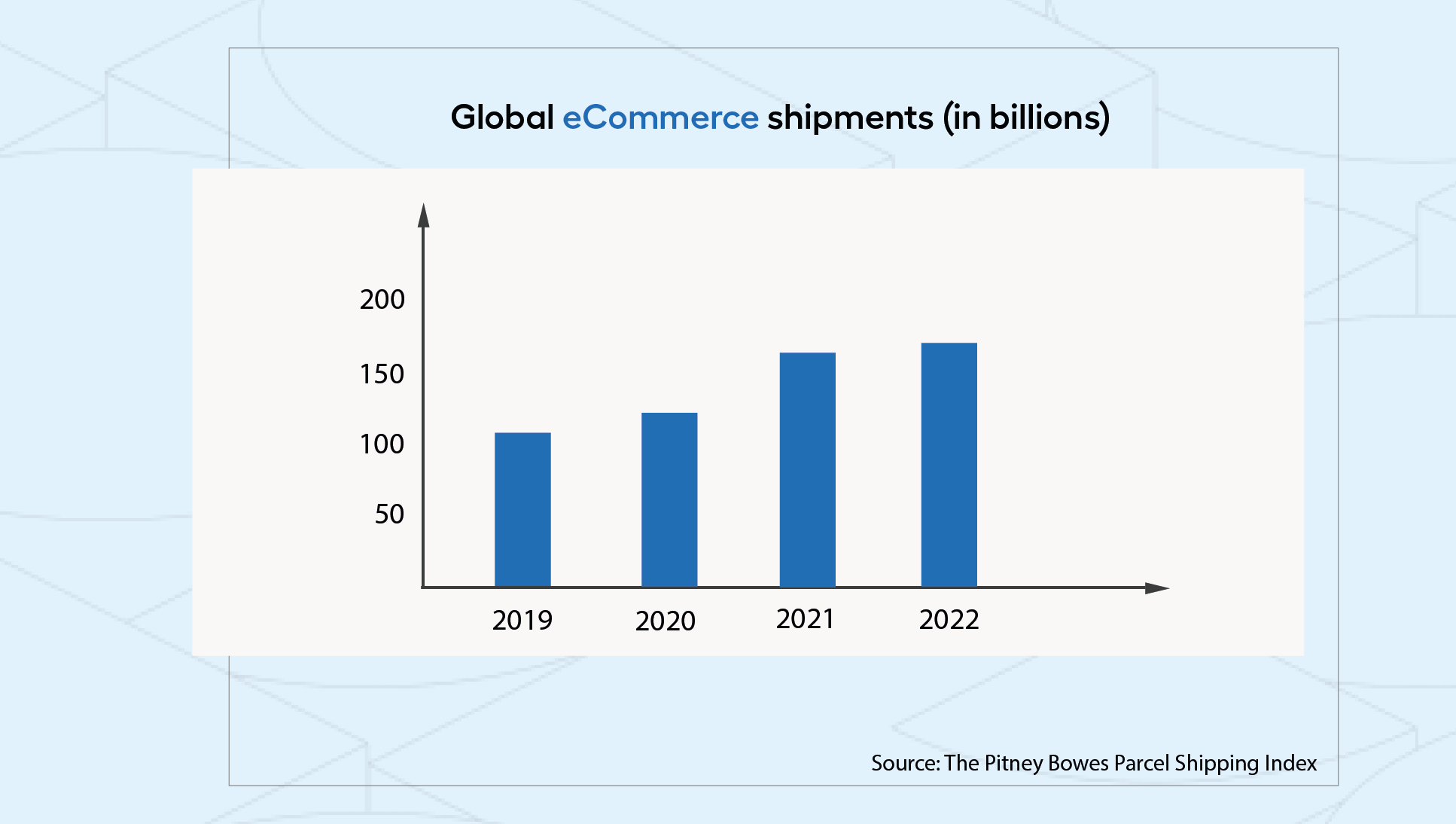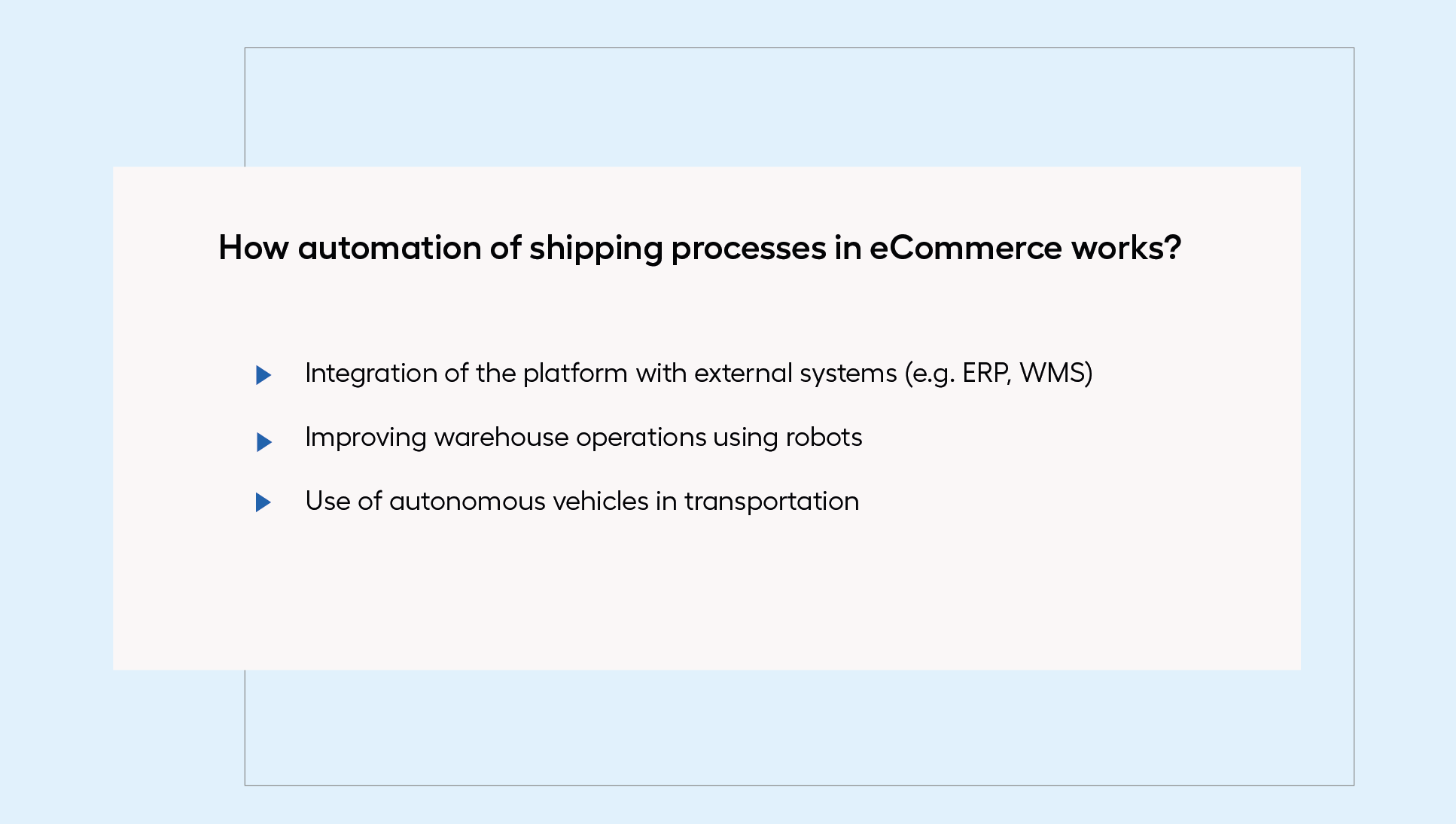In 2022, the number of orders shipped by eCommerce stores will average 5102 shipments per minute, or as many as 441 million per day (according to the Parcel Shipping Index 2023 report). This means that the logistics process must keep up with the rapidly growing eCommerce industry and the changing needs of customers. Consumers no longer expect just fast delivery, but also a more automated and personalized approach to the delivery process. How then is the future of eCommerce logistics shaping up? In this article, we take a look at the key technologies and solutions that are shaping the future of the delivery market.
What will the future of eCommerce logistics look like?
Picking orders, packing them, and then delivering them to the customer's hands - this is how the traditional process of shipping online orders usually works. However, such a packing and delivery model is becoming less efficient in the face of an increase in the number of orders and rising customer expectations. Buyers value not only speed, but also convenience and the ability to personalize delivery. How is logistics responding to these needs?
Automation, supported by modern technologies, plays a key role in improving delivery. Thanks to the use of tools based on artificial intelligence or machine learning, the logistics revolution is gaining momentum, and innovative solutions such as autonomous warehouses (where robots take part in the process of packing packages) are making their way to the agenda. The effect of these changes is to reduce delivery times, increase the efficiency of e-stores and eliminate errors.
Curious about what the future of supply chain management will look like? Discover the latest developments that are shaping the future of eCommerce logistics!

First - integration with external systems
Integration with external systems such as WMS or ERP is also fundamental in creating an autonomous warehouse. How do they help streamline the process?
A WMS is responsible for monitoring and optimizing warehouse operations, managing product storage, tracking the availability of goods and controlling movement within the warehouse. ERP systems, on the other hand, cover a wider range of functions, integrating different areas of the company, such as finance, production, and the logistics area. Both systems allow all elements of the supply chain to communicate seamlessly, ensuring a smooth flow of information and goods.
Second - robots packing shipments
Will robots replace human labor in the logistics process? This is a question that is increasingly coming up in industry discussions. Although it is still difficult to give a clear answer to this question, one thing is certain - robots are a key element in the smooth operation of warehouses. Among other things, they are responsible for the precise packaging of shipments, resulting in a reduction of errors and damage. Thanks to precise programming, they can efficiently pack a variety of products - from heavy and bulky to delicate ones.
What sounded futuristic until recently is becoming a reality. The use of robots in eCommerce by major companies such as:
- Amazon - the clear leader in the use of robots in eCommerce has more than 750,000 mobile drive units operating large-scale warehouses.
- Alibaba - the Chinese eCommerce giant is also investing in warehouse automation, using robots for tasks such as packing and sorting packages.
- Walmart - Walmart is investing in warehouse automation to improve efficiency and reduce costs. This company is using AMR robots to sort items and place them in the appropriate areas of the warehouse.
- DHL - one of the world's largest logistics companies is using warehouse automation to improve the efficiency and accuracy of its operations.
One step further - autonomous vehicles
In the context of delivery automation, a key element is not only efficient warehouse operations, but also innovative approaches to transportation. In recent years, a number of companies and start-ups have conducted advanced tests of autonomous vehicles, opening up new opportunities to streamline the shipment of goods. Some of the solutions gaining popularity include:
- Waymo - is a company that has become one of the leading players in the field of autonomous vehicles. The company recently unveiled an innovative design of "driverless" trucks, which have passed a number of road tests. Waymo's trucks have been equipped with advanced artificial intelligence systems and radar technology, making them capable of autonomous maneuvering in a variety of road conditions, including on long routes.
- Tesla Semi - Tesla, known for its innovations in electric vehicles, also unveiled its proposal for a vehicle that streamlines logistics. The Tesla Semi is a model that is not only all-electric, but also has an autopilot function for safe (confirmed by studies) highway driving.
- TuSimple - another leading company in the industry, has focused its efforts on autonomous trucks for long-distance transportation. Their tests have involved transporting cargo for hundreds of miles without driver intervention. TuSimple uses unique algorithms to analyze data, allowing the trucks to travel long distances efficiently and safely.

Drones and courier robots, or when a vision of the future becomes reality
Imagine a scenario in which packages from your store are delivered straight to your customers' gardens with the help of... a drone. This is no longer just a futuristic description of the future, but increasingly a reality. The use of drones is becoming one of the most promising directions of innovation in the field of delivery. This method of delivering parcels not only provides speed, but also makes it possible to deliver parcels to hard-to-reach places, while minimizing disruption to traffic. Companies such as:
- Amazon's - Prime Air project aims to deliver packages to customers within 30 minutes of placing an order. Amazon has so far conducted tests of the solution in the United States, but also plans to introduce the service in Europe.
- Wing - a company with organizational ties to Google - is conducting advanced tests of drone deliveries in the United States, Australia and Finland. Wing's drones are designed to deliver small items such as medicine, food and household items quickly and efficiently.
In urban spaces, especially in large metropolitan areas (such as New York), courier robots are also gaining popularity. The small vehicles are capable of autonomously delivering small parcels such as food delivery. But will this type of solution be used on a large scale? So far, they have been introduced by companies such as:
- Starship Technologies, a company founded by the co-founders of the once-popular Skype messenger, is testing its courier robots in a number of cities around the world. The small, autonomous vehicles roam the sidewalks, delivering food, packages and other goods directly to customers' doors.
- FedEx - FedEx has also joined the technology race, introducing Roxo, an autonomous courier robot. Roxo is designed for same-day delivery within cities.
Is a new era of eCommerce logistics coming?
From autonomous warehouses to drones and courier robots, the logistics industry is constantly adapting to advancing technological innovations. Modern solutions not only improve the efficiency of delivery processes, but also provide customers with a memorable shopping experience. If you are keen on scaling your e-store, it is worth taking care of the development of the infrastructure related to order processing. Investing in integration with external systems such as ERP or WMS is an important step to increase the efficiency of your logistics processes and cope with the growing volume of customers. Is your online store already equipped with such systems, or are you just considering implementing them?



